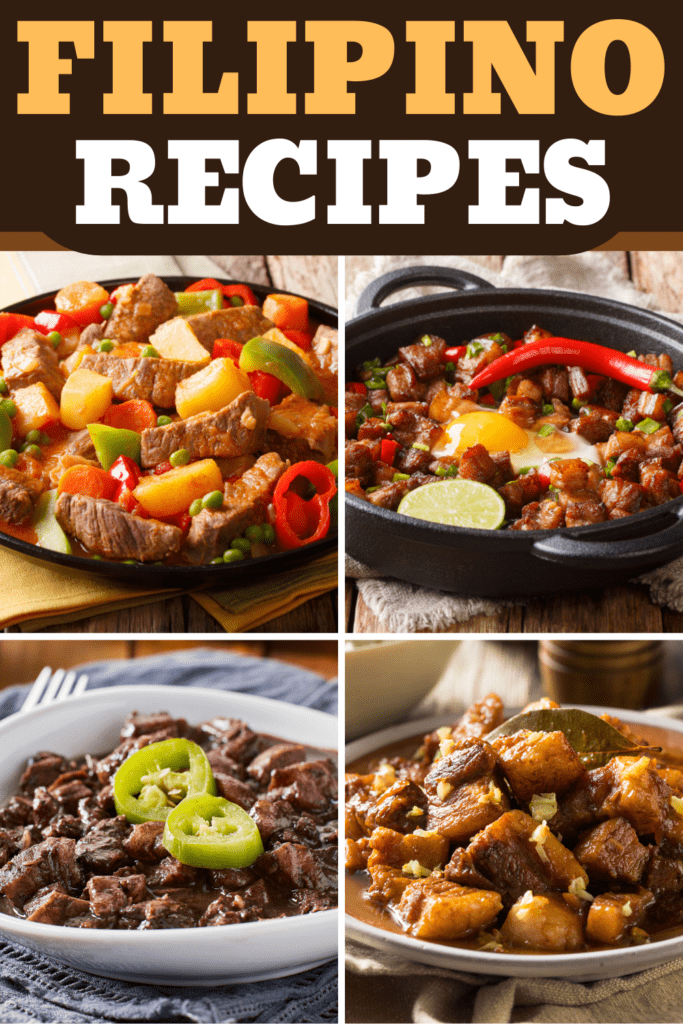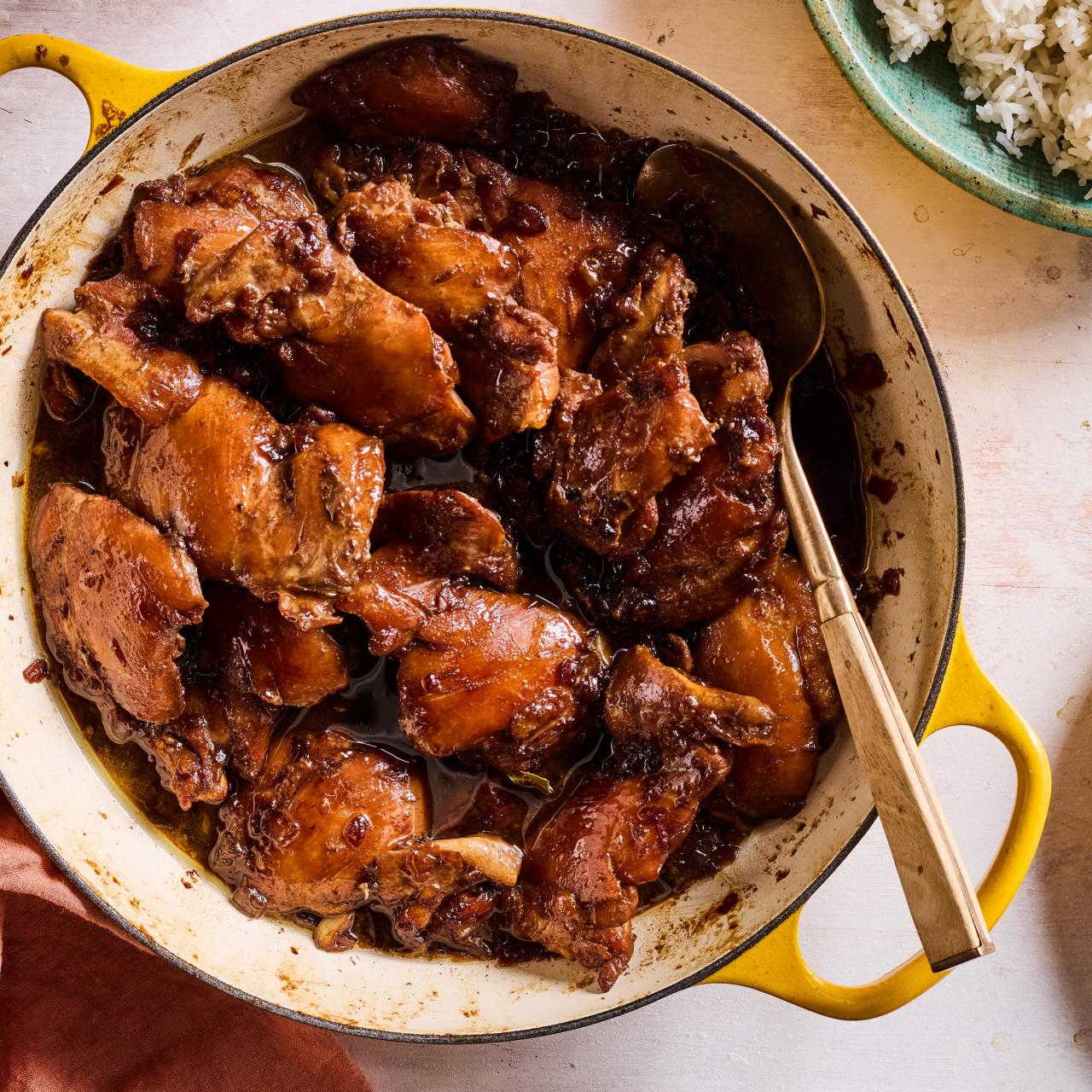Discover Delicious Filipino Food Recipes for every single Occasion
Filipino cuisine is an abundant tapestry of tastes and practices, providing an excellent selection of dishes appropriate for any kind of event. As we check out these culinary treasures, one might wonder which recipes genuinely symbolize the essence of Filipino friendliness and taste.
Traditional Filipino Dishes
Conventional Filipino recipes reflect the abundant social heritage and diverse influences that have shaped the Philippines over centuries. These culinary creations are not merely food however symbolize the background, customs, and values of the Filipino individuals (Filipino food recipes). Impacts from native practices, in addition to Spanish, Chinese, and American culinary traditions, assemble to create a vivid palette of tastes
Essential dishes such as adobo, sinigang, and lechon display the equilibrium of sweet, sour, and tasty elements particular of Filipino cuisine. Adobo, frequently considered as the informal national recipe, features seasoned meat slow-cooked in vinegar, soy sauce, and flavors, offering an alluring mix of tastes. Sinigang, a sour tamarind-based soup, highlights using fresh veggies and seafood, reflecting the country's abundance of all-natural resources. Lechon, an entire baked pig, is a focal point in joyful events, symbolizing event and common events.
Furthermore, local variations include depth to traditional meals, enabling a rich tapestry of culinary practices. Each recipe tells a tale, cultivating connections among families and neighborhoods, ultimately enhancing the Filipino cultural identification with shared cooking experiences.
Quick and Easy Recipes

One popular option is "Tortang Talong," an eggplant omelet that requires simply a few ingredients. Merely grill and mash the eggplant, blend it with defeated eggs, and pan-fry up until golden brownish. An additional very easy recipe is "Sinigang sa Miso," a delightful sour soup that can be prepared in under 30 mins by simmering fish or meat with miso paste, tomatoes, and numerous vegetables.
For a quick side, think about "Garlic Fried Rice" or "Sinangag," which transforms leftover rice into a full-flavored accompaniment by sautéing it with garlic and oil. By making use of these fast recipes, you can savor the abundant and varied flavors of Filipino food while accommodating a busy way of living. These meals not just please yearnings yet also bring a preference of home to your table, making them perfect for any type of celebration.

Festive Event Faves
Parties in Filipino culture are usually marked by a dynamic range of meals that reflect the country's rich heritage and cooking diversity. Festive events, such as birthdays, wedding celebrations, and holidays, include an outstanding spread of traditional delicacies that not only entice the taste but also foster a feeling of neighborhood and togetherness.
Among one of the most precious festive faves is Full Article lechon, a whole roasted pig recognized for its crunchy skin and delicious meat, frequently worked as the centerpiece of any type of grand event. One more staple is pancit, a noodle dish symbolizing lengthy life and success, which can be found in countless regional variations like pancit canton and pancit bihon.
For pleasant treats, bibingka-- a rice cake typically made with coconut milk and topped with salty eggs-- is an essential throughout Christmas celebrations, while leche flan, an abundant sugar custard, functions as a prominent dessert at different celebrations. Filipino food recipes.
Last But Not Least, no Filipino banquet is complete without lumpia-- crispy springtime rolls filled with a blend of vegetables and meat. These dishes, soaked in practice, not only please the palate however likewise reinforce social bonds, making every celebration remarkable.
Home Cooking Classics
While several recipes in Filipino food are linked with cheery celebrations, convenience food standards give a cozy accept that evokes sensations of fond memories and home. These cherished meals typically reflect the rich social heritage of the Philippines, blending flavors and appearances that reverberate with generations.
One ultimate convenience food is Sinigang, a sour tamarind soup, commonly made with pork or shrimp and an array of vegetables. Its warm, tasty broth provides solace on wet days, making it a staple in lots of households.
Lumpiang Shanghai, crispy spring rolls full of ground pork and veggies, are often served at gatherings and delighted in as a treat. Arroz Caldo-- a comforting rice gruel improved with ginger and topped with fried garlic-- gives heat and nutrients, especially throughout ailment.
These convenience food classics not just please cravings but likewise work as a pointer of the love and care infused into every home-cooked dish.
Sugary Food Treats and Desserts
Filipino food uses a fascinating variety of wonderful treats and desserts that captivate the taste buds and mirror the nation's vibrant cooking society. Among one of the most iconic is Leche Flan, a rich custard dessert made with eggs, condensed milk, and caramelized sugar, supplying a creamy appearance and sweet flavor that is tempting. Bibingka, a rice cake usually enjoyed during the Get the facts Christmas season, is made from rice flour, coconut milk, and sugar, frequently covered with salty eggs and cheese, developing a savory-sweet balance.
One more popular dessert is Halo-Halo, a refreshing mixture of crushed ice, sweetened fruits, jellies, and beans, covered with leche flan and ube ice lotion, making it an ideal reward for cozy climate. Turon, or caramelized banana springtime rolls, incorporates ripe bananas and jackfruit wrapped in a crispy shell, supplying a delightful problem.
Lastly, Puto, steamed rice cakes find more frequently appreciated as a snack or side recipe, been available in numerous flavors and shades. These desserts not just showcase the varied active ingredients readily available in the Philippines however additionally highlight the abundant practices and celebrations that accompany them, making each bite a sweet experience.
Final Thought
To conclude, the expedition of Filipino cuisine discloses a rich tapestry of tastes and traditions that satisfy diverse celebrations. From traditional dishes to quick dishes, each offering shows the cultural heritage and cooking creativity of the Philippines. Commemorative favorites and calming classics even more boost the dining experience, while sweet treats give a gratifying final thought to any type of dish. Embracing these dishes promotes appreciation for the dynamic food culture, welcoming enjoyment and connection with shared cooking experiences.